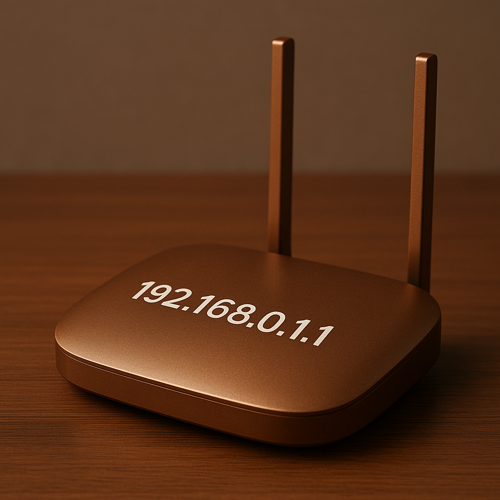192.168.0.1.1
 Guide to 192.168.0.1.1 Admin Login
Guide to 192.168.0.1.1 Admin Login
You can reach your Wi-Fi router’s configuration page by entering the commonly used default IP addresses, 192.168.0.1 or 192.168.1.1, into your web browser’s address bar. These IP addresses provide access to your router’s admin settings, where you can conveniently update your WiFi network name, password, and adjust other settings as needed.
How to Enter 192.168.0.1.1 Admin

Attempting to access your router’s admin panel using the IP address 192.168.0.1.1 won’t work because this address is invalid since it contains an extra segment. Likewise, entering the URL https://192.168.0.1.1 into your browser will also fail to connect to your router’s admin page. To properly reach your home router’s administrative interface, directly type “192.168.0.1” or “192.168.1.1” into your browser’s address bar or click one of the buttons provided below.
Likely default username: admin
Likely default password: admin or password
You can usually reach your home network’s admin panel using any device connected to the network, such as an iPhone, Android smartphone, or computer. A common mistake made when trying to access router settings is using an invalid IP address, such as 192.168.0.1.1, which won’t lead to the router’s login screen. To prevent this issue and successfully open your router’s authentication page, always ensure you’re typing the correct IP address, typically 192.168.0.1 or 192.168.1.1, directly into your browser’s address bar.
192.168.0.1.1 vs. 192.168.0.1 or 192.168.1.1
Attempting to access your router’s admin login page with the IP address 192.168.0.1.1 will inevitably fail because this address is fundamentally incorrect. IP addresses for home routers follow the IPv4 standard, structured into four numerical segments separated by periods which are known as octets. In contrast, 192.168.0.1.1 incorrectly contains five segments, exceeding the required four. Due to this extra segment, your browser cannot recognize it as a legitimate network address, resulting in a failed connection and preventing you from reaching your router’s settings.
To successfully log into your router’s admin panel, the IP address must strictly adhere to the correct four-octet format. The two most commonly used addresses for home routers are 192.168.0.1 and 192.168.1.1. When correctly entered, these IP addresses directly point your web browser to the router’s built-in administrative interface. From there, you’re able to adjust crucial settings such as your WiFi network name (SSID), password, security protocols, and even manage connected devices.
To correct the problem, simply remove the additional “.1” from 192.168.0.1.1, transforming it into 192.168.0.1, or change the third segment to access 192.168.1.1 if that matches your router’s actual default gateway. After this correction, typing either 192.168.0.1 or 192.168.1.1 directly into your browser’s address bar (without “www” or extra spaces) will promptly open the router’s login screen, enabling full administrative control of your network. Always double-check formatting to ensure quick and seamless router management.
192.168.1.1 vs. 192.168.0.1
If a person tries to get administrator access to their WiFi network by inputting “192.168.0.1.1” into Chrome, chances are the real IP address for their router is 192.168.0.1 or 192.168.1.1. This leads to the question: which of these two IPs is it? Both are extremely popular across the world, but major router companies often favor one over the other. Here is a quick guide that might help you discover which IP address you should be looking for.
TP-Link – Primarily uses 192.168.0.1 as the default gateway IP address for most router models.
Netgear – Most Netgear routers default to 192.168.1.1 for admin access.
Asus – Predominantly uses 192.168.1.1 for accessing router admin settings.
Linksys – Almost exclusively utilizes 192.168.1.1 as the default admin gateway.
D-Link – Typically employs 192.168.0.1 as the default IP address on most of its router models.

Additional Mistakes
While the IP address 192.168.0.1.1 has one too many segments rendering it invalid, there are other typos that can cause an IP to fail.
192.168.O.1.1
The IP address 192.168.O.1.1 won’t lead you to your router’s admin login page because it contains two critical mistakes. Firstly, IP addresses can only contain numeric characters separated by dots (letters like the capital “O” are invalid). Specifically, the character “O” is frequently confused with the digit “0,” but they are not interchangeable. Additionally, 192.168.O.1.1 includes five segments (octets) rather than the required four, making it structurally incorrect and unusable for accessing router settings.
Even if you correct the letter “O” to a numeric zero, creating 192.168.0.1.1, this IP address remains incorrect. IPv4 addresses for router administration are strictly formatted with four numeric segments only, such as 192.168.0.1 or 192.168.1.1. To resolve this issue, remove the extra “.1” from the end and correctly format the address as either 192.168.0.1 or 192.168.1.1. Entering one of these properly formatted addresses directly into your browser’s address bar should successfully bring you to your router’s administrative login page.
Why IP Addresses Can’t Have Five Numbers
An IP address, specifically an IPv4 address, is made up of four numerical segments separated by dots, commonly referred to as octets. Each octet can contain a value ranging from 0 to 255, representing an 8-bit binary number. This structure results in a 32-bit address (8 bits × 4 octets = 32 bits), which allows for over 4 billion unique addresses. The four-segment format is essential for proper routing and communication on local networks and the Internet. Routers, computers, and other networked devices rely on this specific format to identify each other and send data accurately.
When an IP address contains five segments, such as 192.168.0.1.1, it violates the IPv4 standard and becomes invalid. Devices and web browsers cannot interpret a format such as 192 168.0.1.1 because it doesn’t follow the strict 4-octet rule. Adding an extra segment confuses the system, preventing access to router admin panels or other devices. To resolve this issue, users should ensure the IP address they input contains exactly four numerical groups, like 192.168.0.1, to guarantee compatibility and proper network functionality.